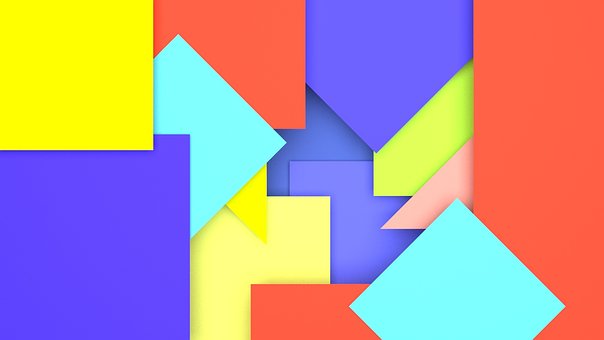 One of the things I have to work on with my students is the concept of squares and square roots. One of the better ways for them to deal with this topic is to physically play with visual representations.
One of the things I have to work on with my students is the concept of squares and square roots. One of the better ways for them to deal with this topic is to physically play with visual representations.A good way to introduce the topic of squared numbers is to show this video where Elvis sings "Think I'm squared baby" a nice 1.25 min in which the perfect squares are sung.
This hands on activity for learning more about perfect squares uses Cheez-its (small edible square cheese crackers) to help students explore what numbers make a square and which ones do not. For instance, you might ask if 8 crackers make a perfect square. Students can physically move them around to check. This is a kinesthetic method of determining if the number of Cheez-its make a perfect square.
Once students have created a shape as close to a square, they use a specially created number line to figure out the length of each sides so they can estimate the square root of the shape. They then check their answer on a calculator. Yes it is a decimal approximation but they are getting a chance to see how they find the square root approximation for shapes that are not perfect squares.
I like having them use geo-boards either real or digital to create perfect squares as a way of representing squared numbers such as 2^2 or 3^2. They can "see" that the base gives the length of each side of the square. With discussion, they can conclude the square root is the length of the side of the square.
In other words is 2^2 means a square that is 2 units by 2 units, the area is four. Therefore, the square root of four is 2. The geo-board makes it so easy to see the relationship. Without the geo-boards, my students often struggle to relate the two topics.
The next step in the process is to crate squares that are not perfectly oriented both vertically and horizontally. In other words, its time to create squares that cut across the rows and columns so the slope is not zero or undefined. When the sides are done this way, the Pythagorean theorem has to be employed to find the length of the sides.
Desmos has a lovely activity where students put cards on the same square or square root together so at the end, they will have 5 stacks. The trick to connect cards is to place one on top of the other so they connect and make a stack. It took me a bit to figure out how to do it but I really enjoyed it. The only thing to let students know ahead of time if they give up easily is that not all stacks are the same height.
So I have additional activities to begin the next semester in my pre-algebra class and any class I need to review squares and square roots. Let me know what you think. I'd love to know.
No comments:
Post a Comment